Legenarra: an endangered disease?
1989/05/01 Etxeberria, E. Iturria: Elhuyar aldizkaria
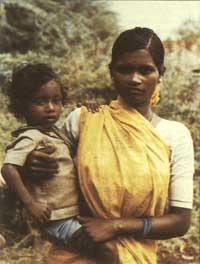
At the moment when somewhere in the tropics the sun sets on the bank of a river full of mosquitoes, a sixth of the people who observe the legendary raise the forests standing in the health center of the village. They are tired all day. Throughout the day they have had to walk, on donkeys, by bicycle, on foot or by boat.
For legendary patients to reach treatment centers that receive monthly medications, they have had to cross swamps, rivers, undergrowth, race trails or flooded roads. The medical meeting has a rare irony. In a few years they are praising a new legal treatment that endangers their jobs.
This new treatment is known as polycymiotherapy. According to medical scientists invented in 1981, it is a revolutionary way to treat leprosy. For the first time in the history of this disease, medical personnel are engaged in polycymiotherapy as a way of effective healing of what corresponded to it. In some countries where the legendary is a terrible problem, as in India, with about three million people affected, treatment has had a massive incidence. Thanks to polycymiotherapy, the number of people who were removed from the leper registry last year was higher than the number who had increased.
In the last 40 years the standard treatment of leprosy has been a drug called dapsone. But in the late 1970s, with the growing number of patients who did not attend treatment, scientists began to look for an alternative. Of the patients who at the beginning of the 80's were affected by the bark bacilli (70% in some places), studies of resistance to the dapson were conducted.
With an unconventional urgency, the World Health Organization convened a research group in 1981 to analyze the problem. This group suggested a treatment scheme based on the combination of three drugs: rifampicin (potent bactericidal drug), clofaciimine (weak bactericidal drug, but with anti-inflammatory properties) and dapsone itself. Laboratory studies indicated that this combination could kill 99.9% of the leena bacillus in a few months.
Moreover, a dross of Mycobacterium leprae that suffered a drug would fall before the other two. Rifampin kills the leprosy bacillus by blocking the enzyme called RNA polymerase. This enzyme is essential for the metabolism of the body's DNA. Dapson prevents bacillus from synthesizing folic acid. Folic acid is the basic vitamin for bacillus survival.) The influence of klofaciimine is unknown.
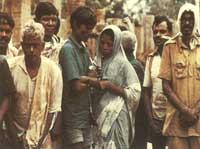
Seeing that the combination of drugs was strong, the WHO recommended the application of treatment for six months for patients with mild disease and two to four years for patients with severe disease. For their shorter duration, patients can better follow treatment.
Since then, 96 of the 153 states that have cases of firewood on the recommendation of the WHO have approved polycymiotherapy. Of the approximately 5 million patients registered worldwide (the actual number may be between 8 and 10 million), around 2.1 million people have begun to apply this therapy. More than a quarter of them have already completed their treatment and doctors believe they will have no more active leprosy.
In all places where this therapy has been applied, a dramatic decrease in the number of cases has been observed. Personnel hired and trained to treat hundreds or thousands of patients are in urgent need of facing unemployment or working in other health areas. The number of new cases remains fairly constant, but one of the causes may be that people who previously did not request treatment come now to take polycymiotherapy.
Treatment yes, but not in any case
Statistics only offer a part of the topic. Interviews with more than 200 patients and more than 140 health workers from Venezuela, Brazil, Ethiopia, Malawi and India (countries where polycymiotherapy is applied) also give a positive picture.
Patients appreciate the regular relationship that this type of therapy offers them. They turn once a month to health managers and, of course, meet with other legendary patients.
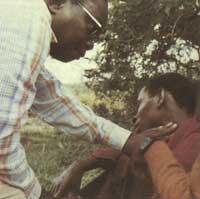
But this regular relationship can have its disadvantages. Health workers fear that in some countries patients will be too attached to this therapy. But the benefits of this therapy are more than the cons.
This therapy treats patients in their community, thus contributing to eliminate the stigma associated with the disease, which increases with legendary or leproseria and hospital isolation.
Skeptics wonder if this type of therapy is useful and how long it works. For WHO officials something had to be done, as they found resistance to dapsons anywhere. The situation could go hand in hand and there was no time for a long and accurate analysis. The passage from a drug to a polycymiotherapy was useful in the case of tuberculosis. In the case of the legendary, there was no reason to think that the strategy would fail, especially after laboratory tests showed that combined therapy would better destroy the dross of the leena bacilli.
According to officials, polycymiotherapy reduces the number of bacteria in patients before dapsons. With this treatment, 10-20% suffer the harsh reactions produced by leprosy and these are due to the patient's immune reaction to the bacteria. This type of treatment also seems effective in delaying the appearance of resistant bacilli. The proportion of relapses after total treatment is 1% in most countries.
One of the disadvantages of this type of treatment is that it cannot be applied in any way. WHO officials believe that for this treatment to have good results, the health system should have the following characteristics: that the community is formed on the disease, on this type of treatment and on the early treatment necessary to prevent deformation; that new cases of burdens are detected in time; that they are provided with regular and convenient treatment with the necessary supervision; that follow-up of patients who are only seen occasionally; and that after treatment.
For a State with other economic and health problems it may be impossible to create this system. The first step would be to develop concrete plans at the state, distributive and community level. Then someone should write the guidelines specifying the general lines necessary to apply this type of treatment. These general guidelines should indicate how to choose patients who may be given polycymiotherapy and how to exclude those who cannot apply, when to stop applying treatment to patients, how to diagnose firewood and how to distribute polycymiotherapy.
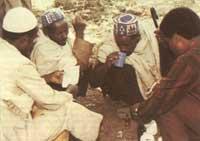
Laboratories should be available to confirm field diagnoses and follow the treatment process. The program should include clinics and hospital beds, transportation and means for the maintenance of specific files. Governments should also make available the means to protect and rehabilitate patients with physical deformations. And finally, if this “infrastructure” gives the expected result, in a few years its task will end.
Dollars against the disease
Cost is also a problem. The realization of the initial investment necessary to channel the aforementioned system is unthinkable for many States with endemic firewood.
The training of personnel necessary for the application of polycymiotherapy, as well as staff salaries, transport, laboratories and the cost of services for hospital patients, can be between two and three times higher than the cost of medicines.
However, it should be noted that this type of treatment should be taken by patients in a short period of time. This treatment can reduce the number of patients with legal capacity by 75% between five and ten years. However, for five or ten years this treatment will not be an important economic cost for life. In addition, the use of dapsone in most countries has not caused major changes in the number of patients with firewood. Although the dose of dapson is cheap, it does not have great value as a disease control tool.
If this type of treatment cures what really corresponded to it, is it able to eradicate the disease by reducing the number of cases in all places of application?
There are different opinions when determining whether this treatment will eradicate the disease. According to many experts, the decline of the legendary is due to improved living conditions, especially hygiene and population density.
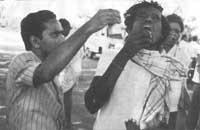
For people who don't know they have leprosy, they can spread the infection to their neighbors until they start taking polycymiotherapy. This means that transmission can only be lost by the vaccine. But experts are not sure about it. One thing is to have a vaccine and another give that vaccine to several people needed to eradicate the disease. And the legendary is increasingly retiring around the world to hard-to-reach places. It is difficult to reach places with climate change, population migration or inadequate transportation.
Only polycymiotherapy cannot establish leprosy. However, it has served to control the loyal in countries where the disease is endemic. It has managed to revitalize the disease that has been in the dark for hundreds of years. This therapy has shown that in many communities it is possible to demolish the walls of the leprosy ghetto and that healthcare personnel, like many other diseases, can diagnose, treat and even cure. In this sense, regardless of the final outcome, the introduction of this type of treatment has been a really revolutionary fact.

Gai honi buruzko eduki gehiago
Elhuyarrek garatutako teknologia


